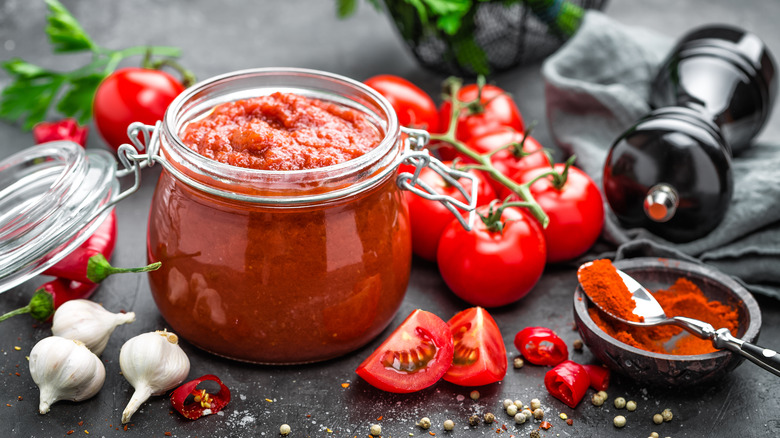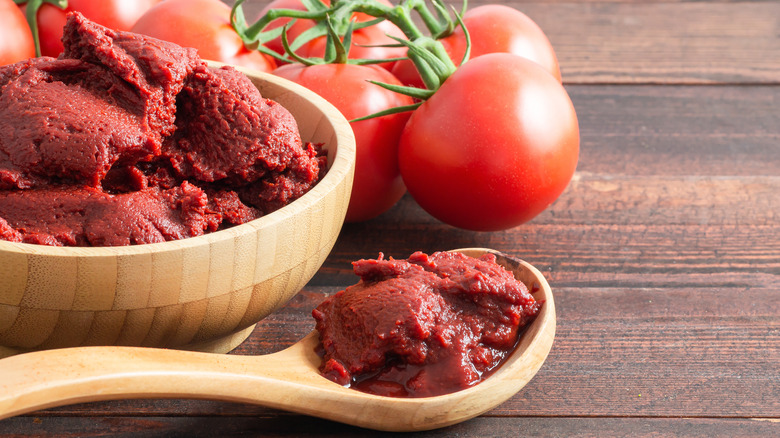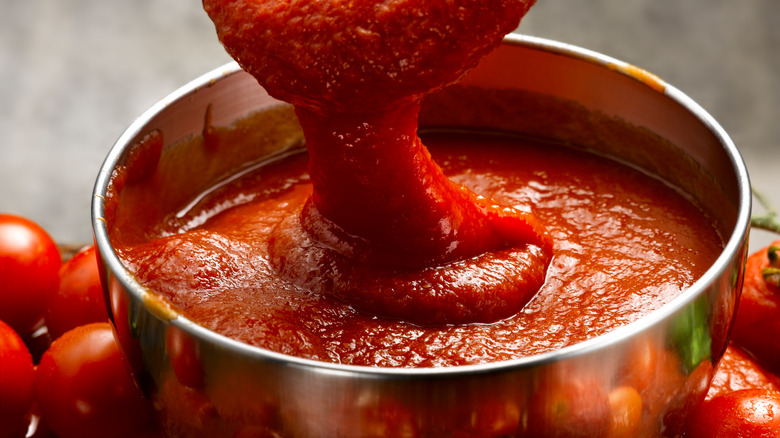The Simple Way To Make Tomato Paste Into Tomato Purée And Vice Versa
Pantry staples are a great thing to stock up on, seeing that canned products have a long shelf life and can be convenient in a pinch. However, there's something so versatile about tomato products, whether it be a canned tomato purée or tomato paste. These two ingredients take dishes to the next level, but it's essential to differentiate them and know the roles they play in a dish to unlock their full potential.
According to EatingWell, tomato paste is basically tomatoes that have been cooked down into a thick paste with the skin and seeds removed. When the water content in the tomatoes evaporates almost completely, this concentrates the flavor and yields a very potent taste, which is why most recipes only require small amounts.
Tomato purée has a much thinner consistency than tomato paste, though it's thicker than tomato juice. The Kitchen Community states that tomato purée is simply tomatoes that are cooked until their water content releases and form a liquid, with the flesh still staying intact. From there, it's strained and canned.
While the two products contain tomato solids, what differentiates them is their water content. If you ever find yourself with tomato paste yet need tomato purée or vice versa, we've just the tricks for you.
If you're short on tomato paste
We have all been there — a recipe calls for tomato paste, but you only have canned tomato purée. What to do? According to MasterClass, the trick is remembering the 1:3 ratio. If you need one tablespoon of tomato paste, add three tablespoons of tomato purée to a saucepan and cook until it turns into a thick paste. Because tomato paste is a bit sweeter than tomato purée, this extra heat exposed will cook off the water and condense the tomato's natural sugars.
Tomato paste is used to impart tomato flavor with a small quantity of the ingredient; it's often found in dishes like meatloaf, sloppy joes or as a thickener for soup, stew, and chili. It works great in meaty dishes like stuffed peppers and those mentioned, but also hearty sauces like ragu alla Bolognese or a flavorful pizza sauce.
If you're short on tomato purée
You can also easily find yourself in the reverse scenario, where you need tomato purée but only have a tube of tomato paste in the fridge. But thankfully, there's an easy fix for this as well. Instead of running to the store, MasterClass suggests adding equal parts (or a 1:1 ratio) of tomato paste and water until your mixture reaches the right consistency. For example, if your recipe calls for a cup of tomato purée, you combine half a cup of tomato paste with half a cup of water. A simple blitz in the blender will do just the trick if you need to combine it quickly.
Tomato purée is found in endless recipes as a flavorful way to loosen sauces while adding that necessary acidity. You can often find tomato purée called for in baked spaghetti, bison chili, and even Mexican rice.


